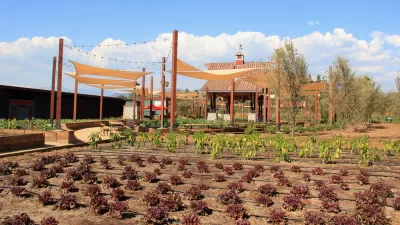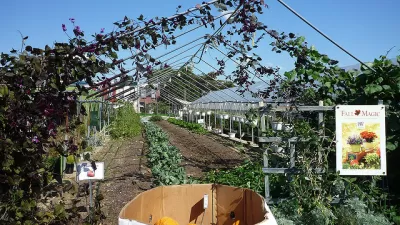I’m watching local Rochester-area advocates respond to presentations by three panelists on the subject of “Community Food Supply and Environmental Justice” at the Association for Community Design annual conference. We’re here hosted by the Rochester Regional Community Design Center.
I'm watching local Rochester-area advocates respond to
presentations by three panelists on the subject of "Community Food Supply and
Environmental Justice" at the Association for
Community Design annual conference. We're here hosted by the Rochester Regional Community Design Center.
The panelists are:
- Matthew Potteiger, Professor of Landscape Architecture at ESF Syracuse University
- Diane Picard, Massachusetts
Avenue Project, Buffalo - Beth Miller, Community Design
Collaborative, Philadelphia
And the respondents are:
- Tom Ferraro, Foodlink
- Christine Johnson, Greater
Rochester Urban Bounty (GRUB) - Eleanor Coleman, SWAN
- Wade Norwood, Fingerlakes Health
Systems Agency
Inspiring/Sobering Facts from the Panel and discussion:
- Mapping project by Potteiger and his students show historic
patterns of full-service grocery stores moving out of central Syracuse. - Research by Sandy Lane shows the connection between
proximity to "corner store" type of groceries and lack of access to
full-service grocers with low infant birth rate. - In the U.S., there are more people in prisons than working
on farms. - Buffalo has 657 acres of vacant land and an overweight rate
that is three times the national average. - The Massachusetts Avenue Project is opening an aquaponics
project that will grow 3000 tilapia (plus produce fertilized by the tilapia's
poop.) - The Massachusetts Avenue Project has a 100% high school graduation
rate and college attendance rate among the high school seniors who work with
them. These students will all be the first person in their family to attend
college. (This generated applause from the audience.) Buffalo has a 45% high
school drop-out rate. - The town of Chester, Pennsylvania hasn't had a grocery store
for over 40 years (but they are getting a new soccer team). - The Community Design Collaborative uses design as a tool to
overcome the perceived or real obstacles that developers encounter in trying to
locate grocers on infill sites. - Foodlink, which operates as a food bank in the Rochester
area, several years ago came to the inclusion that meeting emergency food shortage
needs would never solve the problems of hunger, so they changed tactics and
starting looking to create jobs and opportunities around food. - After finding high rates of lead in the soil, SWAN began
working with kids to build earthboxes to allow healthy gardening. Unexpectedly,
they learned that the boxes allowed a quadriplegic in the neighborhood who had
never been able to garden before to do so. - In an informal study of 40 Rochester corner stores, one was
found to carry fresh produce. - Some scientists believe that we might be about to see the
first generation since the civil war of children who will not live as long as
their parents due to obesity and food insecurity.

Maui's Vacation Rental Debate Turns Ugly
Verbal attacks, misinformation campaigns and fistfights plague a high-stakes debate to convert thousands of vacation rentals into long-term housing.

Planetizen Federal Action Tracker
A weekly monitor of how Trump’s orders and actions are impacting planners and planning in America.

In Urban Planning, AI Prompting Could be the New Design Thinking
Creativity has long been key to great urban design. What if we see AI as our new creative partner?

Portland Raises Parking Fees to Pay for Street Maintenance
The city is struggling to bridge a massive budget gap at the Bureau of Transportation, which largely depleted its reserves during the Civd-19 pandemic.

Spokane Mayor Introduces Housing Reforms Package
Mayor Lisa Brown’s proposals include deferring or waiving some development fees to encourage more affordable housing development.

Houston Mayor Kills Another Bike Lane
The mayor rejected a proposed bike lane in the Montrose district in keeping with his pledge to maintain car lanes.
Urban Design for Planners 1: Software Tools
This six-course series explores essential urban design concepts using open source software and equips planners with the tools they need to participate fully in the urban design process.
Planning for Universal Design
Learn the tools for implementing Universal Design in planning regulations.
Gallatin County Department of Planning & Community Development
Heyer Gruel & Associates PA
JM Goldson LLC
City of Camden Redevelopment Agency
City of Astoria
Transportation Research & Education Center (TREC) at Portland State University
Jefferson Parish Government
Camden Redevelopment Agency
City of Claremont






























